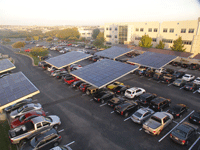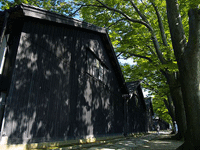Activity: Identifying the Components of Solar Energy Conversion Systems
Based on the reading in the previous page of the lesson, we understand that almost everything exposed on the Earth's surface can be described in terms of a solar energy conversion system. Some systems are capable of producing more useful work than others, and there are both technologically designed and natural systems. We will use this activity to explore this concept and to identify various SECSs embedded in society. Some will be obvious in the context of this class, while others will require a more nuanced view or a creative perspective.
Take a look at each of the following five images, and thoughtfully locate as many SECSs as you can in each one. Now, try to identify and list the functional components (aperture, receiver, storage, distribution, mechanism, and control mechanism) for each of these SECSs and think about how they work. Please write a short paragraph for each image that identifies all of the SECS’s as well as an explanation of how each one serves as a component. It may even be possible that some of the systems are themselves components of a larger system, in which case you will need to dial out your perspective to a larger system.
Do your best to explore and be creative rather than looking for all the "right" answers.





Submission
Please fill in the "matrix" (Excel spreadsheet template provided) based on the results of your analysis. You are also welcome to provide any additional discussion on the systems you observe in the images. Submit your work into “Lesson 1 Learning Activity Dropbox” in Canvas.
Grading Criteria
This activity is graded out of 20 points. Each image is worth 4 points, 2 points for identification of the components and 2 points for your explanation.
Deadline
See the Canvas calendar for specific due dates.
